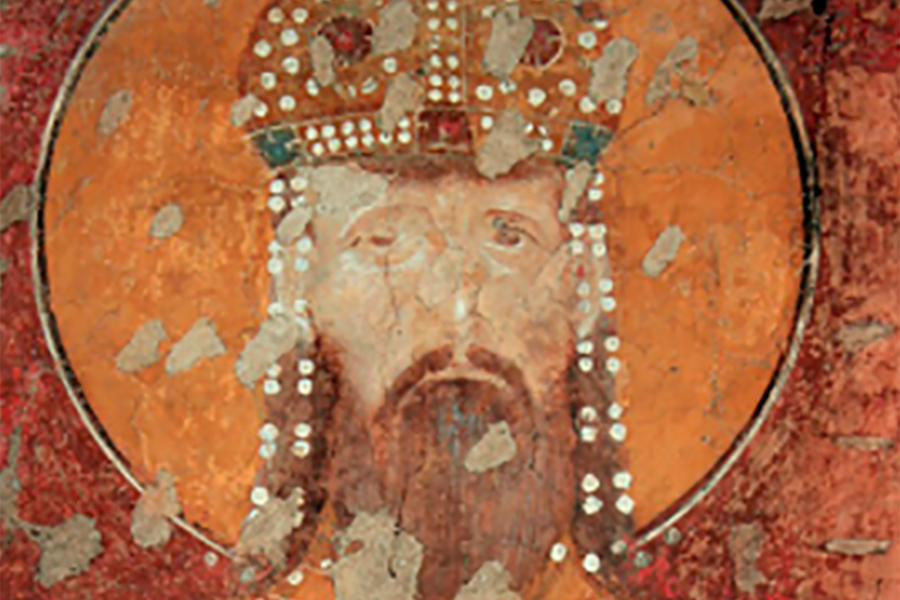
International Conference “King Milutin and the Palaeologan Age”
On the occasion of the 700th anniversary of the death of the Holy Serbian King Stefan Uroš II Milutin (1282 ˗ 1321), the University of Kragujevac (RS), the Institute for Liturgy and Sacred Arts of the Faculty of Orthodox Theology University of Belgrade (RS), the Koç University in Istanbul (TR), the Aristotle University of Thessaloniki (GR), the Institute for Strategic Research of the Republic of Serbia (RS), the Serbian Cultural Information Center SPONA from Skopje (MK), with the blessing of the Holy Synod of Bishops of the Serbian Orthodox Church, organized an international, interdisciplinary scientific conference on “King Milutin and the Palaeologan Age: History, Literature, Cultural Heritage” which took place in Skopje (MK) between the 24th and the 26th of October 2021 .
The reign of king Milutin (r. 1282-1321) represents a period of dynamic political and cultural interactions between Serbia and the Byzantine Empire under the Palaeologan dynasty. The conference “King Milutin and the Palaeologan Age: History, Literature, Cultural Heritage” aimed to examine the wider historical, cultural and political context of these interactions and explore their impact on artistic and literary production in Serbia and Byzantium at that time. Along with military interventions that enlarged the territories of the Serbian medieval state, King Milutin and his entourage spurred extensive building and artistic activity, inviting the best Byzantine masons and artists to work for them. Thus, king Milutin’s reign was crucial in the development of architectural and artistic ideas that mark both Serbian and Byzantine art of the fourteenth century. Today the artistic achievements of king Milutin’s era are visible only in a limited number of preserved monuments and these reflect conspicuous influencе from the capital, Constantinople.
The extensive program of this Conference covered a wide range of topics relating to this historical context, including textiles, costume and dress. The full program of the meeting, with its extensive roster of speakers can be found here.
On the occasion of the 700th anniversary of the death of the Holy Serbian King Stefan Uroš II Milutin (1282 ˗ 1321), the University of Kragujevac (RS), the Institute for Liturgy and Sacred Arts of the Faculty of Orthodox Theology University of Belgrade (RS), the Koç University in Istanbul (TR), the Aristotle University of Thessaloniki (GR), the Institute for Strategic Research of the Republic of Serbia (RS), the Serbian Cultural Information Center SPONA from Skopje (MK), with the blessing of the Holy Synod of Bishops of the Serbian Orthodox Church, organized an international, interdisciplinary scientific conference on “King Milutin and the Palaeologan Age: History, Literature, Cultural Heritage” which took place in Skopje (MK) between the 24th and the 26th of October 2021 .
The reign of king Milutin (r. 1282-1321) represents a period of dynamic political and cultural interactions between Serbia and the Byzantine Empire under the Palaeologan dynasty. The conference “King Milutin and the Palaeologan Age: History, Literature, Cultural Heritage” aimed to examine the wider historical, cultural and political context of these interactions and explore their impact on artistic and literary production in Serbia and Byzantium at that time. Along with military interventions that enlarged the territories of the Serbian medieval state, King Milutin and his entourage spurred extensive building and artistic activity, inviting the best Byzantine masons and artists to work for them. Thus, king Milutin’s reign was crucial in the development of architectural and artistic ideas that mark both Serbian and Byzantine art of the fourteenth century. Today the artistic achievements of king Milutin’s era are visible only in a limited number of preserved monuments and these reflect conspicuous influencе from the capital, Constantinople.
The extensive program of this Conference covered a wide range of topics relating to this historical context, including textiles, costume and dress. The full program of the meeting, with its extensive roster of speakers can be found here.